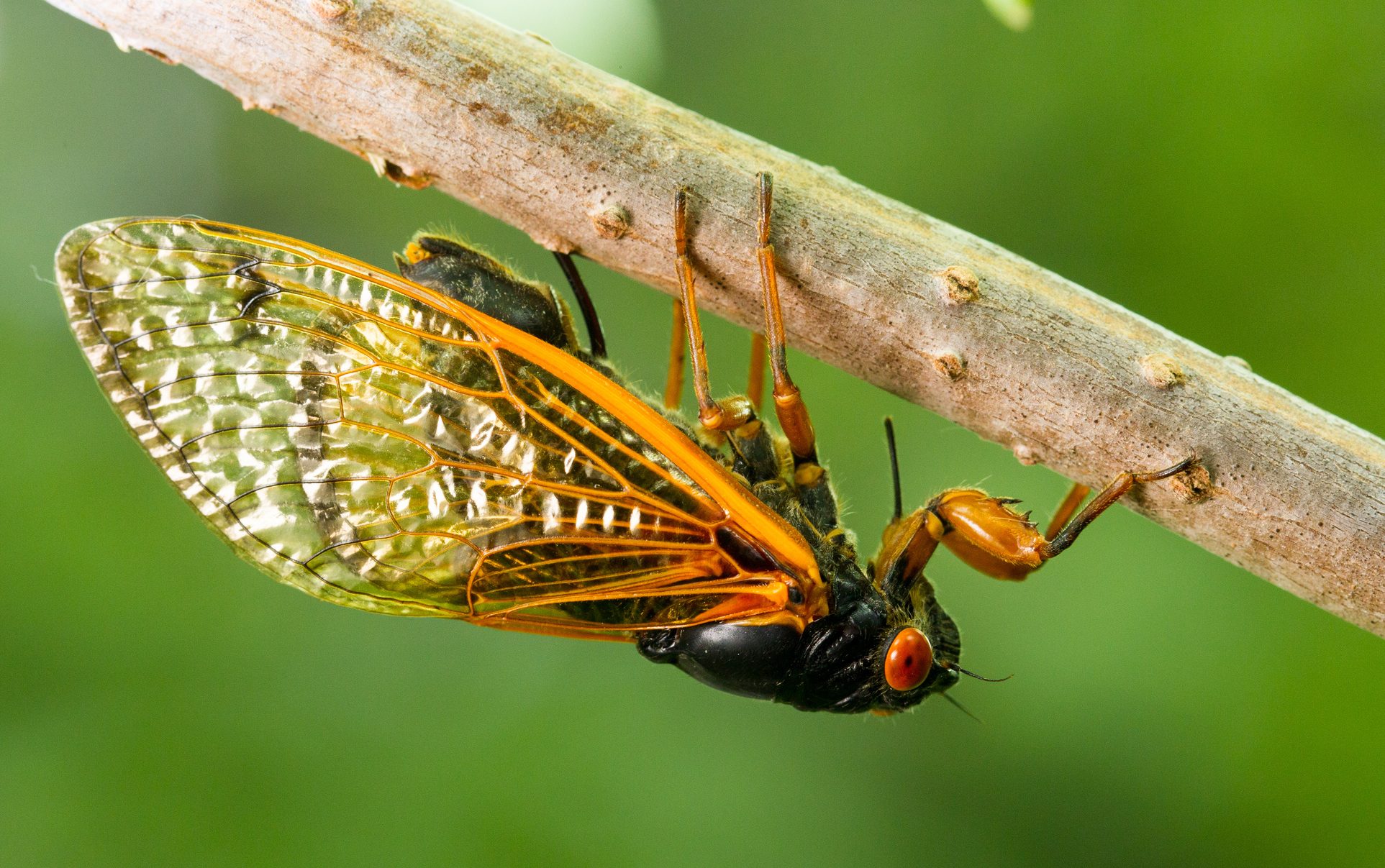
In the coming months, one of the largest broods of periodical cicadas to emerge in U.S. history will arise after a 17-year period underground.
Dr. John Abbott, an entomologist and the director of research and collections for University of Alabama Museums who has studied cicadas since childhood, says they’re not a sign of the apocalypse, but they could be a tasty snack.
Can you tell us about the large cicada emergence expected in the U.S.?
This year’s brood is what they call Brood X of the 17-year periodical cicadas. They’ll be emerging in late May and early June in quite a number of states on the East Coast. They won’t come to Alabama, but some will be in Georgia.
What’s a periodical cicada?
The periodical cicadas have a 13- or 17-year life cycle. This brood was hatched in 2004. There can be stragglers over that time period, with some emerging a year earlier or later, but the majority will come out synchronized this year.
What’s the difference between periodical cicadas and annual cicadas?
The annual ones are what we see every year in the summer. They’re usually greenish and quite a bit larger. They come out every year. They don’t have as long a life cycle as the periodical ones. The periodical ones have red eyes, are darker in color and on average they’re a little smaller.

What will they do when they emerge?
They will feed on the fluids of plants and so cause some damage to smaller plants and the end of fresher tree branches. You will see some visible destruction, but certainly, for the bigger trees, it’s nothing they can’t handle. Smaller trees will be more susceptible to damage. Herbaceous plants are typically not a problem as they’re only interested in trees.
The males will make a lot of noise calling for females. They’ll mate. The females will lay eggs; the nymphs will hatch and go underground to feed on the roots of trees for another 17 years.
One of my favorite stories is when I was driving in Illinois and I heard cicadas as I was going down the main highway. There was a rest stop and I pulled over. There was this big emergence of periodical cicadas and they were everywhere. That lets you know how loud they are when you can drive down the interstate and hear them with your windows up and radio on. They will definitely attract attention.

How long will they be around?
Probably about a month or so and then they will die. They also provide a huge food source for predators — birds, raccoons, coyotes, anything that will want to eat on them. They’ll litter the ground as they die.
Is there anything people can or should do about all the cicadas in their area?
I’d encourage people to just enjoy and embrace it. It’s a marvel of nature. If you really want to do more, I’d say collect and eat them. Fry them up or find different ways to cook them. I’d say because they’re large and plentiful it’s a good starter insect and introduction to entomophagy. They’re arthropods and are in the same group as shrimp. Not saying they taste like shrimp, but if you season them, they’ll take on the flavors of what you put on them. They’re like fried pork skins, very high in protein.
Since we’re living in seemingly apocalyptic times, will Brood X blot out the sun as they fly into the sky?
Not quite a biblical plague, but there will be many of them. Some will think it’s neat and some, if they’re not expecting it, will be concerned. I’m sure myself and the news will get some calls because of their sheer numbers.
Contact
Jamon Smith, strategic communications, jamon.smith@ua.edu
Source
Dr. John Abbott, jabbott1@ua.edu, 205-348-0534
